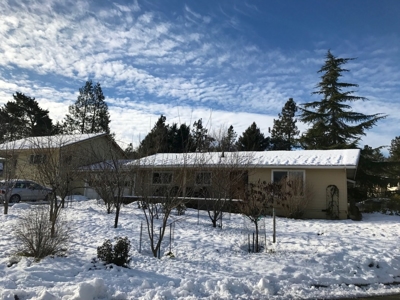
You may be ready for the warm weather to arrive, but is your home or office prepared for the transition from winter to spring? As temperatures rise, snow and ice around a building turn into water, and significant damage could result from poor planning or inadequate drainage. Completing a few simple tasks around your home or business before the new season starts can save you from costly damages caused by snowmelt runoff in the long term. Follow these tips from the experts at ServiceMaster Restore to minimize water damage from melting snow and spend your time enjoying the spring weather instead of dealing with floods and expensive repairs.
1. Clear Your Gutters, and Downspouts
The purpose of a gutter system is to carry excess water away from your home or business. This system can't work properly if the gutters are clogged by ice or debris. Use snow melt tabs to break down snow and ice stuck in the gutters. Then, remove debris like dead leaves, twigs, dirt, mud, and larger chunks of ice. If you're concerned about large amounts of water from snowmelt runoff or spring rainstorms pooling close to your property, attach a sloped leader to your downspouts. These extensions will carry the water farther away from the structure, minimizing the risk water damage from melting snow or rain.
2. Check Your Roof
As the snow on your roof melts, check for pooling water that could soak into the roof, attic, or ceilings. Inspect loose or missing shingles and corresponding areas inside your home for water damage.
3. Seal Cracks In Your Foundation, Doors, and Windows
Think of your property as a fortress - you must fortify your building so it can't be penetrated by sneaky leaks. Arm your doors with sturdy weatherstripping and prepare your windows by replacing worn or old seals. Patrol the perimeter of your property and caulk any gaps or cracks you see in the foundation. With these protective measures, snowmelt will have a much harder time wreaking havoc.
4. Test and Maintain Your Sump Pump and Pit
Sump pits hold groundwater that collects under buildings during heavy rains, rapid snowmelt, sewage backups and even normal weather conditions. A sump pump, typically located in the basement, moves accumulated water from the pit through a discharge pipe where it can drain safely away from the home. Ideally, this device should prevent flooding and water damage to your basement or foundation, but you have to perform regular, seasonal maintenance tests to make sure it's working properly. Clear out any dirt and debris and pour water into the pit to test the pump's functionality. Watch the water exit the discharge pipe, and check that it drains properly away from your home or office.
If you discover water damage from melting snow this spring, identify the source and take steps to seal any leaks. Prevent the water damage from getting worse and avoid the spread of mold by calling the experts at ServiceMaster Restore as soon as you notice a problem. Our teams are available 24/7/365 to ensure you get the service you need as soon as you need it so you can get back to enjoying the beautiful weather. Call us at 1-800-RESPOND today.
